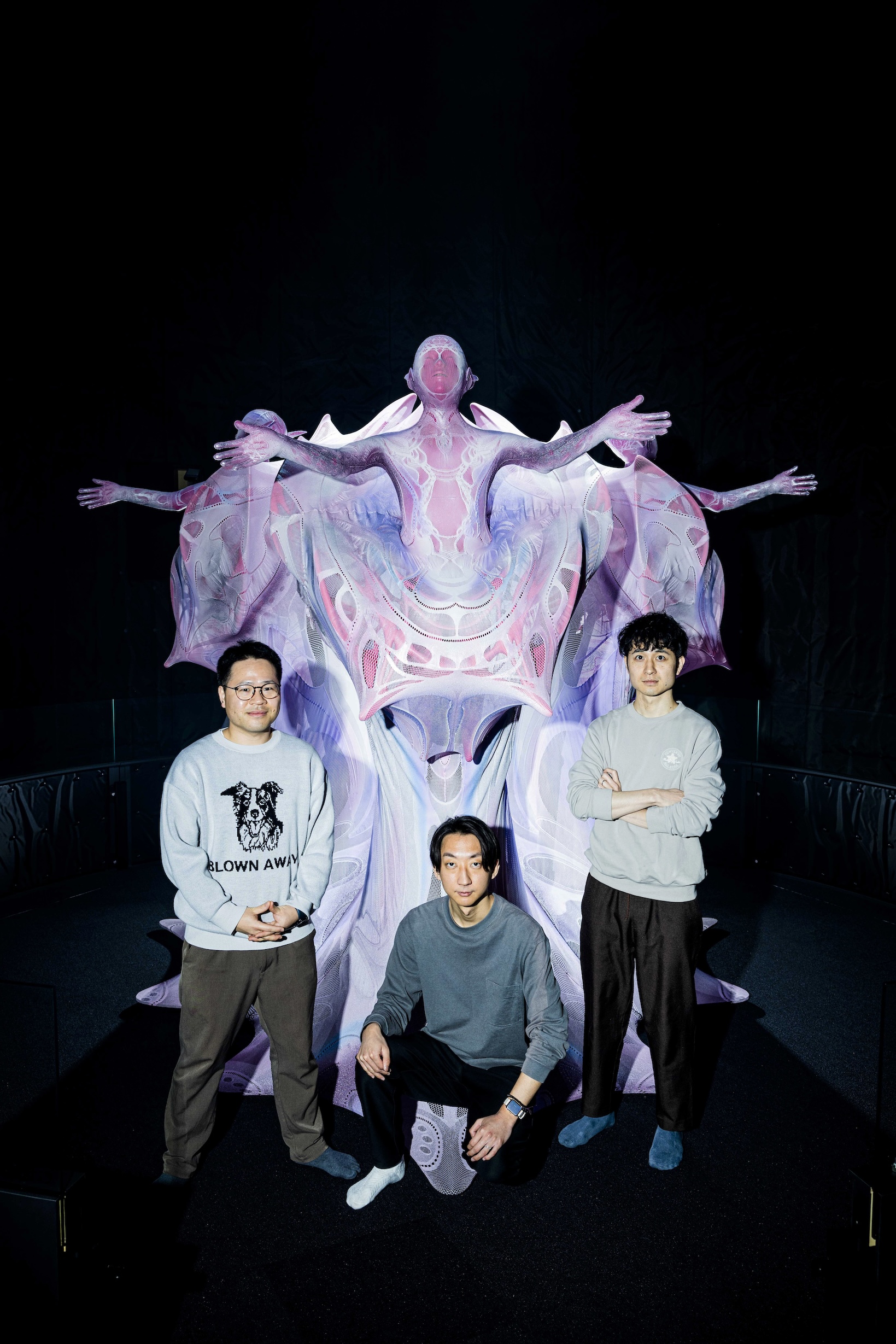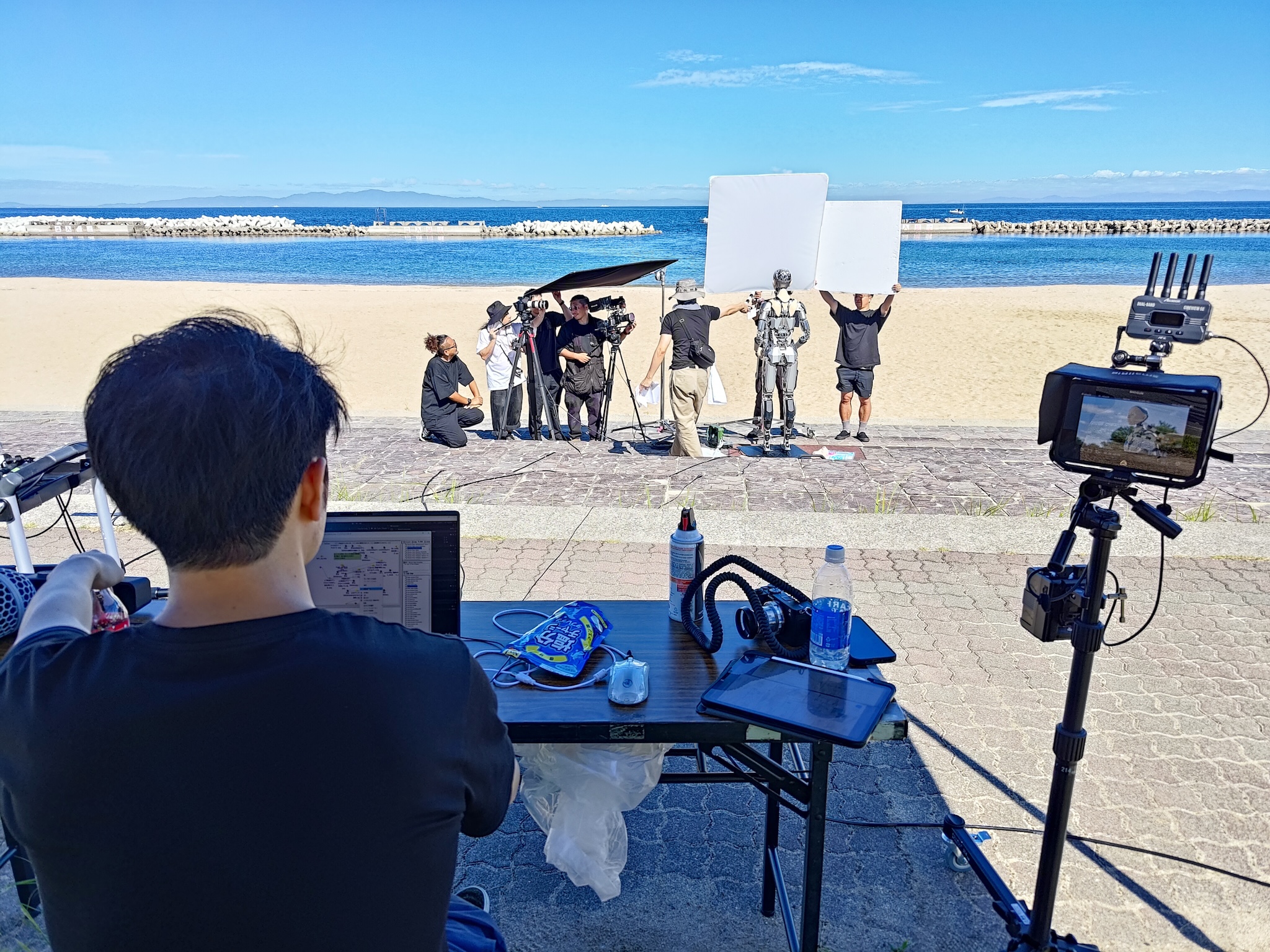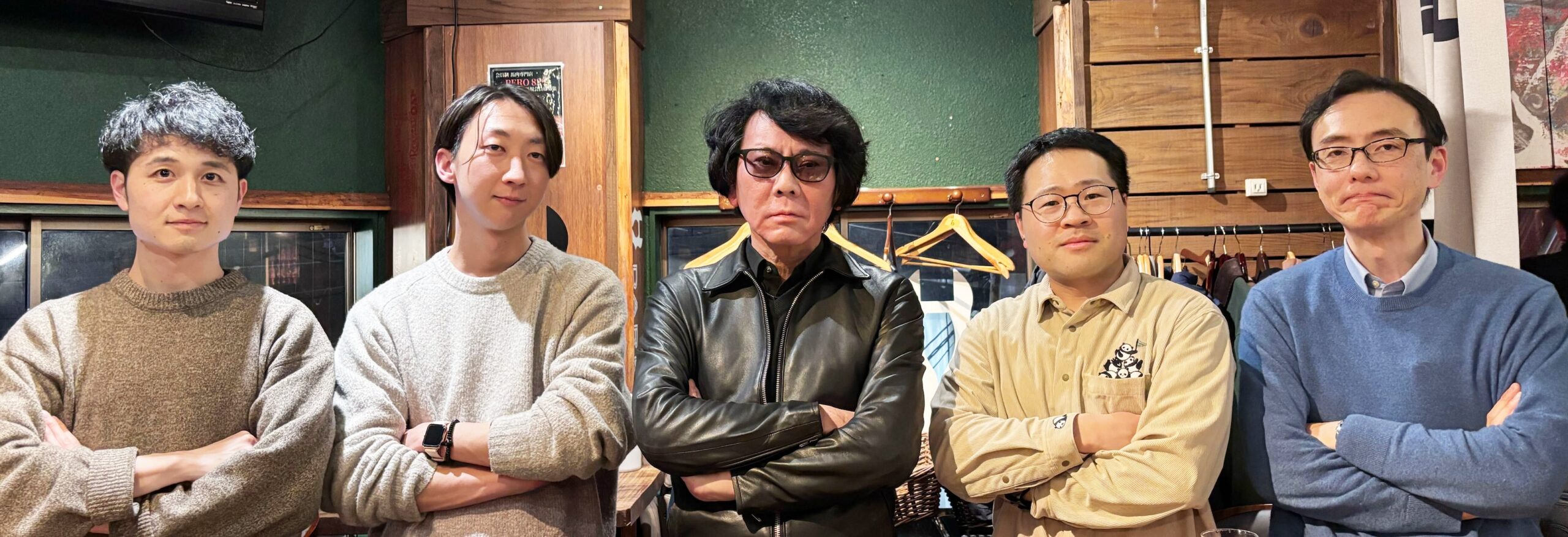[Secrets of Development #7: Android System Development and Implementation] Bringing androids from the laboratory into society—Achieving a big step forward at Expo 2025
A variety of robots and androids envisioned for the present, 50 years later, and for 1,000 years from now, await visitors at the Future of Life signature pavilion. The staff at Hiroshi Ishiguro Laboratories of the Advanced Telecommunications Research Institute International (ATR) have been responsible for the entire process from android system design and motion development to preparation of the exhibition system and its operation during the period of Expo 2025 Osaka, Kansai, Japan. This time, we spoke with research engineer MIKATA Ryusuke and the team at ATR, about the difficulties faced—from system development to implementation—and the way ahead.
Going back to the laboratory due to the once-in-a-lifetime opportunity of an Expo 2025 project
ATR usually engages in motion generation and system development of androids that coexist with humans. Using the android development technologies that ATR has nurtured so far, its mission at the Expo is to use androids to give shape to the future world envisioned by ISHIGURO Hiroshi, the pavilion’s producer.
At ATR, Mikata is responsible for android motion implementation, system development, and meeting and collaborating with other teams. He was an intern at ATR during his university days. He was working at a general company when Ishiguro was delegated to be involved in the Expo as a producer of a signature pavilion.
“I started thinking about returning to ATR when my senior colleagues working there suggested that I come back. I would be lying if I said I did not hesitate, but being involved in the Expo is a once-in-a-lifetime opportunity. Therefore, I resigned from my previous job to participate in this project.”
Those senior colleagues are SAKAI Kurima, a researcher, and FUNAYAMA Tomo, a research engineer at ATR. Sakai, undertaking research at ATR, felt a unique potential for androids at the Expo.
“I wanted more people to have the opportunity to learn about androids because I have always been doing research with androids in the lab. I felt that the Expo is the place that can provide such an opportunity.”
Like Mikata, Funayama had spent a period outside ATR.
“At one time, I launched a software system-related venture company and worked there. It brought me away from androids, but that made me feel more deeply the value of humanlike androids. Therefore, I started wanting to promote the introduction of androids in society after returning to ATR. I thought the Expo would be a good opportunity.”
The Expo is a golden opportunity for the people at ATR, who have been thinking about bringing androids from the laboratory into society—how they should engage with society and the roles in society that should promoted for their adoption. They have embarked on their challenge to exhibit at the pavilion.

To implement natural humanlike behavior
The project was pursued through the following steps.
The project team receives the androids’ motion concepts from the exhibit’s production and PR teams.
↓
Within ATR, the project team considers the systems and control methods that should be implemented to achieve the motion concepts. They select the sensors if needed, and proceed with development by verifying and confirming the actual motions using androids.
↓
Once development has reached a certain stage, Prof. Ishiguro as well as the production and publicity teams are requested to confirm the motions.
↓
The motions are further refined based on the feedback received.
The project team comprised one member who served as the overall leader, three android system development members, and a member who provided development support. Android motion development was assisted by a student from Osaka University and four students from Kindai University.
Mikata says ATR had been in charge of many android projects in the past, but the requirements of the Expo project were unprecedented, both in terms of quantity and quality.
“We have never worked on so many androids before. Furthermore, we needed to expand the breadth of the androids’ expressions.”
Expanding the breadth of the androids’ expressions meant it was necessary to implement natural behavior with motions that are more humanlike, exquisite, and impressive than before.
“To implement natural humanlike behavior, it was necessary to verify the hardware limits and steadily work on tasks repeatedly. For example, if the speed of a motion is too slow, it would not look humanlike; conversely, if it is too fast, the body would sway and make it look more machinelike. Therefore, we need to find the appropriate speed and adjust accordingly. There were other issues, such as the hand motion trajectory, fingers movements, and expressions. Each time, we pursued the optimal motion while repeatedly making revisions, and at the same time, updated the software being used for generating motions.”

Connecting other teams with the androids by letting them see and experience for themselves
Adjustments were needed to achieve how the production and PR teams would like the androids to perform that matches the exhibition. Mikata had many meetings with these teams and he played the role of liaising between them and the ATR team.
“We could premise that the other teams do not understand the extent of what androids can do. It is also not possible to convey the sense of developmental costs and our difficulties if we do not tell them the technologies and equipment needed to achieve the things they want the androids to do. Therefore, I also pay attention to convey such an understanding correctly.”
Openly sharing information deepens mutual understanding and enables better collaboration. As such, there are key points to keep in mind.
“As far as possible, I try to get our partners to visit our laboratory and see the androids for themselves. Of course, it is possible for them to confirm the motions using video clips, but by letting them see the androids and feel their actual presence, we can achieve planning and production with a sense of realism.
Rediscovering androids by trying out new motions and dramatic effects
“Many of the androids’ motions and dramatic effects conceptualized by the production and PR teams were new to ATR. Those were things that we have never thought of or tried before. By taking on the challenge of creating them, we made many discoveries, including the things that androids can do and the ways that things can be presented.”
Mikata, who said this, particularly remembers bringing the androids outdoors to film a promotional video.
“The androids are usually inside the laboratory, so it was novel to see them moving outdoors in an everyday setting. It made me feel that, in the future, we would see such a scene of androids blending into daily life.”
“In particular, using androids to show how humans would look 1,000 years from now left an impression on me,” said Sakai.
“I think we would not have come up with such colors, designs, and movement ranges if we only undertook research within the laboratory. These were contents that broadened my image about androids and humans in the future.”
With only a few months before the opening of the Expo, the project is now in its final stages. The team has completed foundational system development and improvement of the primary technologies. Right now, they are at the stage of implementing the actual motions.
“From here, we will be working on tasks such as developing the actual motions, setting up androids, sensors, computers, wiring, and the operational system in the actual environment, adjusting the coordination with lights and sounds, verifying that all androids are operating stably, and making improvements. There are many unknown factors until we operate in the actual environment, and it is a major challenge to implement polished performance under such conditions and continue to operate stably for a half year during the Expo. I am feeling both worried and hopeful now.”

The Expo project is the first step toward the future of humans and androids
Before the opening of the Expo, the members from ATR thinks they have gained a lot through this project.
“It was tough, but updating technologies and approaches through trial and error certainly helps to improve my capabilities as well as those of ATR,” said Sakai.
Funayama added, “Many of the androids produced this time will move on to partner companies and society after the Expo. Androids entering society and blending into the lives of humans—we will be taking the first step toward such a future.”
Mikata said that some perspectives were gained because this was the Expo project.
“Through this project, the process of understanding the ways that machines would interact with humans in the future—as envisioned by Prof. Ishiguro, partner companies, and the production team—and reflecting them in the exhibits became a precious opportunity for broadening our thinking. In particular, learning the partner companies’ vision of the future after 50 years gave us the perspective that, besides the evolution of androids, our living environments and society itself will also evolve. We would not have obtained these new perspectives if we had only looked at the androids, and I hope to further apply them in our future research and activities.”
Come and see the future where androids coexist with humans
Lastly, the members had their messages for visitors to the Expo.
Funayama said, “Under the theme ‘Amplification of Lives,’ besides whether humans will become androids, we are expressing the possibility that our own surroundings will become robots and androids. Through experiencing the exhibits at the pavilion, I hope visitors will think about the significance of such a future and what it means to be human.”
“We are working hard to create androids that amaze people and make them wonder if the androids were alive. Many people may think that androids are still something from the far future. At this pavilion, visitors can take a step into the future and experience the kind of daily life you see in anime and movies, where humans talk to robots and androids and live with them. I hope the experience will make visitors feel closer to androids and prompt them to think about future society,” said Mikata.
From Sakai, “When you step into the pavilion, an extraordinary world unfolds in front of you, and you may unconsciously want to take videos and photos. However, I hope you will see this world with your own eyes and feel it for yourself. We hope to see you at the pavilion!”

(Interviewed: January 2025)
[Profile]
Hiroshi Ishiguro Laboratories, Advanced Telecommunications Research Institute International (ATR)
http://www.geminoid.jp/en/index.html
Hiroshi Ishiguro Laboratories were founded to encourage and promote studies based on original and unique ideas from Hiroshi Ishiguro, ATR Fellow, who has remarkable achievements on robotics. The laboratories have explored new information media based on humanlike robots that harmonize humans with information-environment beyond existing personal computers, while always asking, “What is the essence of human beings?”